|
|
||
|---|---|---|
| build | ||
| data | ||
| screenshot | ||
| src | ||
| .gitignore | ||
| README.md | ||
README.md
Dust3D
Dust3D is aim to be a quick modeling tool for game development. Currently the development is in the very early stage.
Please join the discussion reddit/r/gamedev
Idea
I was inspired by Jimmy Gunawan's blogs of monster generation, here is the first one INSPIRATION / Pixar Monster Factory Part One, and by search the Skin Modifier of Blender, I found the theory of Skin Modifier:
B-Mesh: A Fast Modeling System for Base Meshes
of 3D Articulated Shapes(Authors: Zhongping Ji, Ligang Liu, Yigang Wang). I started to think of monster model generation for game development from years ago, thanks for this paper, Dust3D is achievable now.
From my initial thought, Dust3D should be a tool like Makehuman, with more versatile features, not only can make human, but also be able to generate monsters automatically.
Build
Generate Xcode Project
$ cd build
$ qmake -spec macx-xcode
Generate Makefile
$ cd build
$ qmake
$ make
TODO & Progress
- Drawing Primitives (Dec 15, 2016 ~ Dec 17, 2016)
Sphere
I don't want the whole project have any unnecessary dependent, like glu library. Let's start with drawing a sphere without gluSphere, because I want implement the same spheres which presented in the B-Mesh paper.
Cylinder
Two caps and many strips composites a cylinder.
Infinite Grid
Almost all 3D editor have a infinite grid ground, I just made a finite one, in the future, I should expand the grid outside of the screen to make it infinite.
Now, for just beginning, I think it's a not bad start.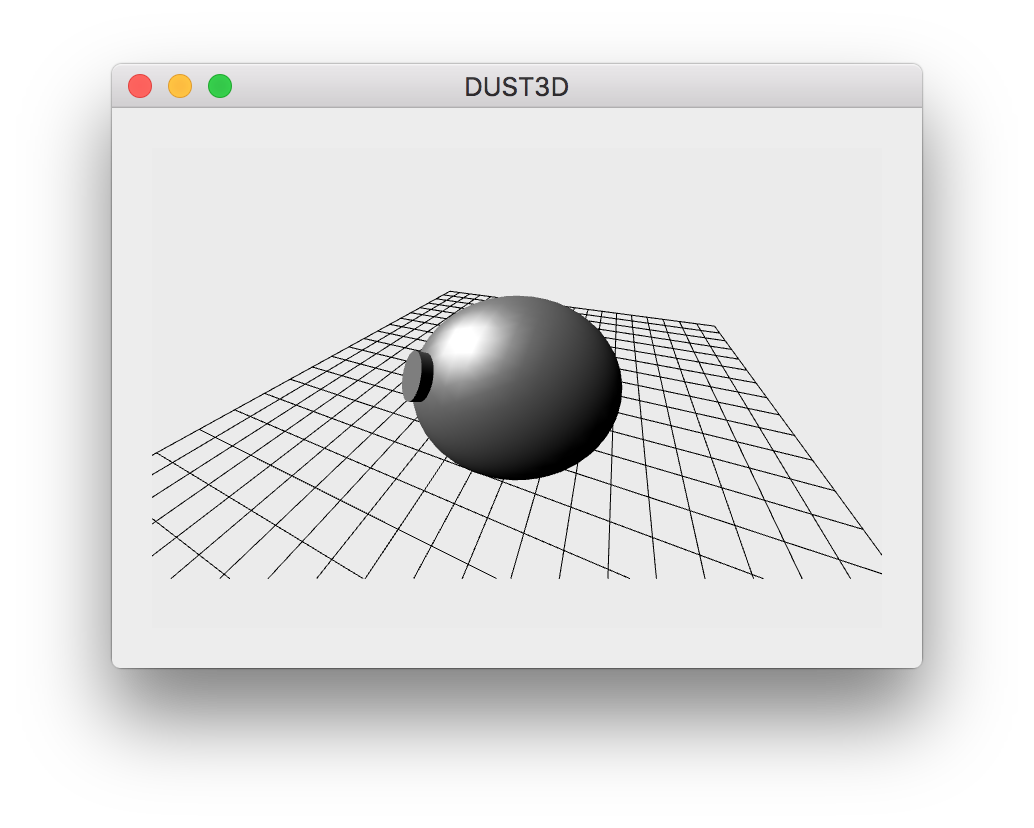
- Implement B-Mesh algorithm (Dec 18, 2016 ~ Jan 04, 2017)
There is a implementation of B-Mesh algorithm in C++ language, but I want the pure C version, so I start to implement my own version. I read both paper and this implementation, it gave me very helpful understanding of this algorithm.
Drawing Skeletal Shape Balls
Draw shape ball is easy, no need to rotate, I just need scale it along the ball's radius. Draw the cylinder which connects two shape balls is more difficult, I need do some math to rotate it. Here described it.
Camera Control
Camera rotate/zoom implemented, here is a good article which explained the theory of OpenGL Transformation. Most important is that the demo app is very beautiful.
Added x,z axis, looks better than last screenshot.
I have to use the GLU library, the previous implementation of drawSphere and drawCylinder looks not good, and take too much time to debug.
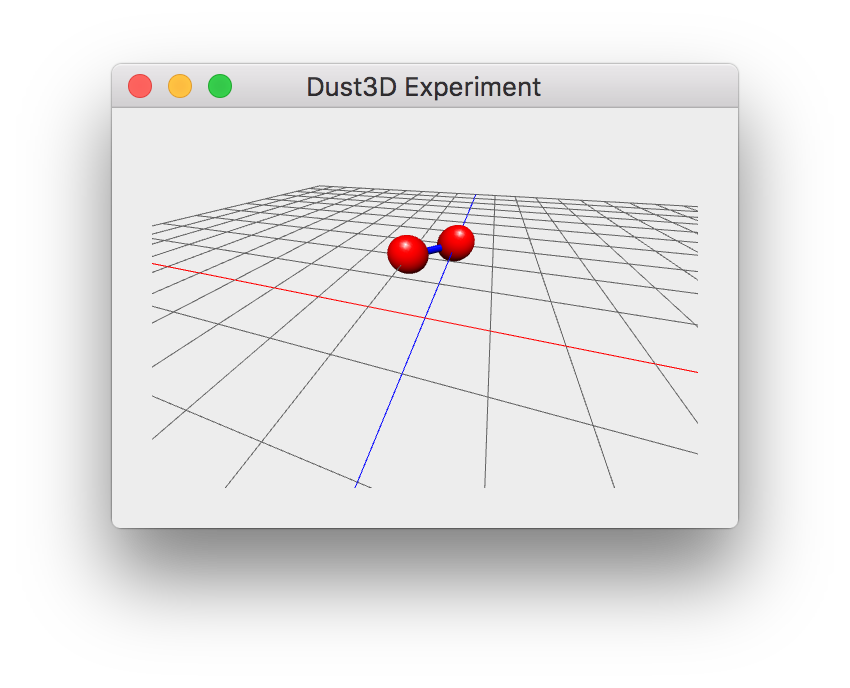
B-Mesh data struct
I created the test nodes's geometry information from Blender. Here is the render result ofdata/bmesh_test_1.h

Generate Inbetween Nodes

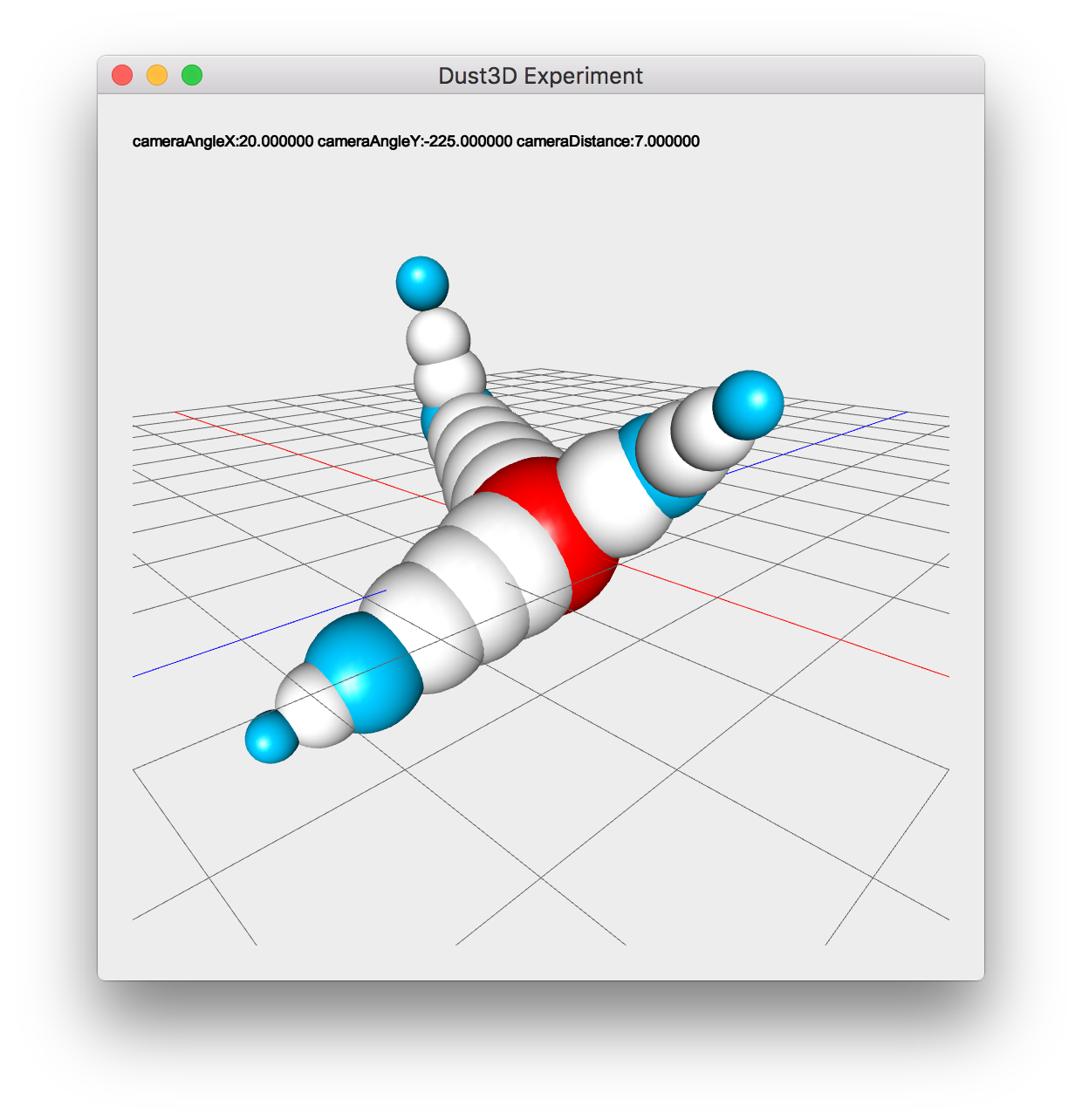
Generate Mesh
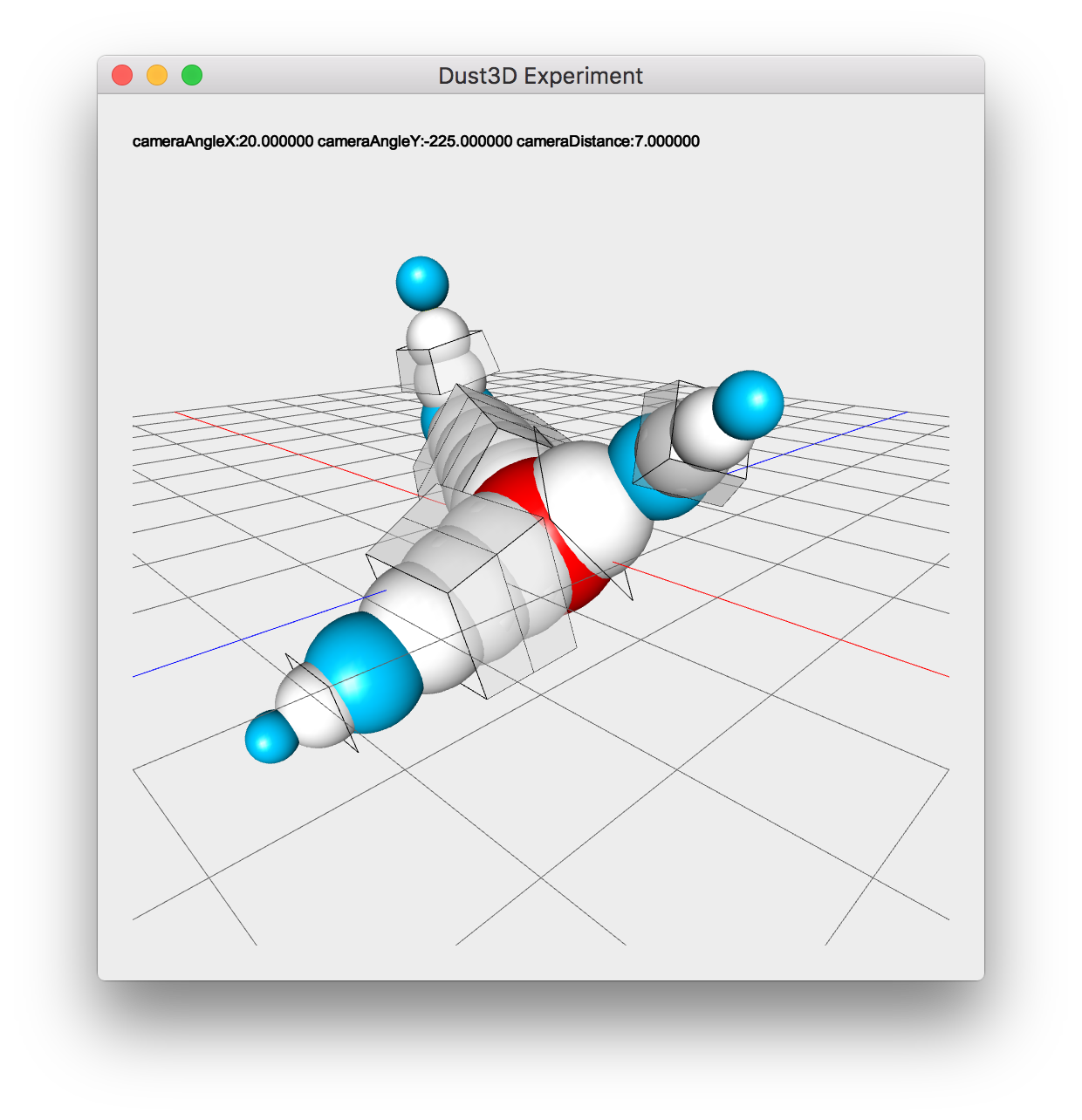
When I am implementing the B-Mesh algorithm, I am also think in the future, how to create a library of bunch of initial base models. There is a paper the Skeleton of a Closed 3D Shape described how to generate skeleton from mesh, this is the reverse progress of what I am doing, I think it can resolve the problem of insufficient initial base models, I can generate from tons of existed models.
Convex Hull
After finish the rotation at the two connected bones, I need implement 3D Convex Hull algorithm at the joint ball, there are so many methods to get the convex hull, I found the Gift wrapping is the most strait-forward one, though is not the most efficient one.
There is a good implementation of Gift Wrapping algorithm written in lua language. When I was implementing, I first translated this version to C language, but maybe there are some bugs on my own translation, there are lots of repeated faces, so changed a little, the code now is not just the translation of the original lua version.
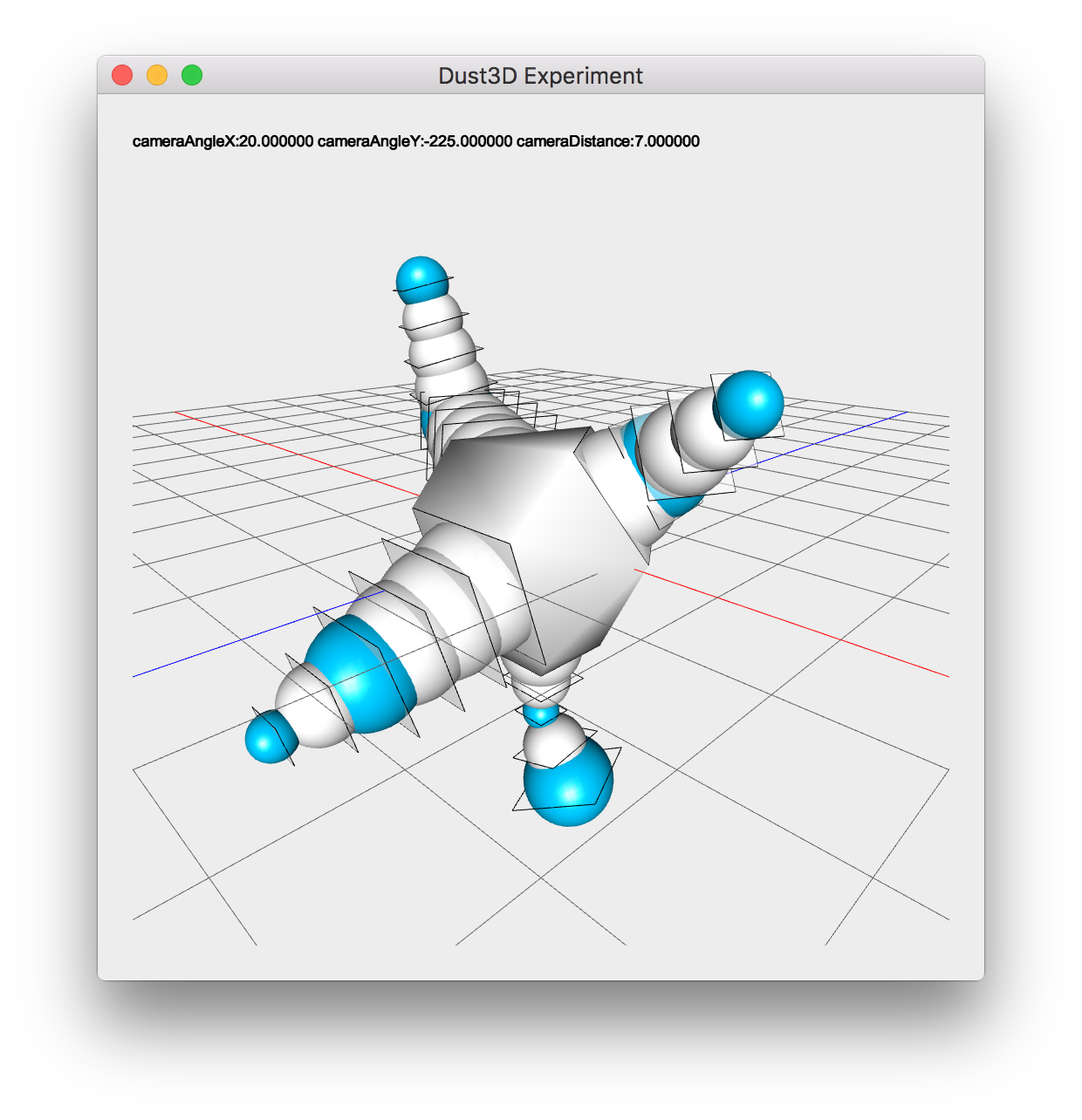
Stitching
I follow the B-Mesh paper, made another test module inside Blender, and created a corresponddata/bmesh_test_2.hmanually.



Catmull-Clark Subdivision
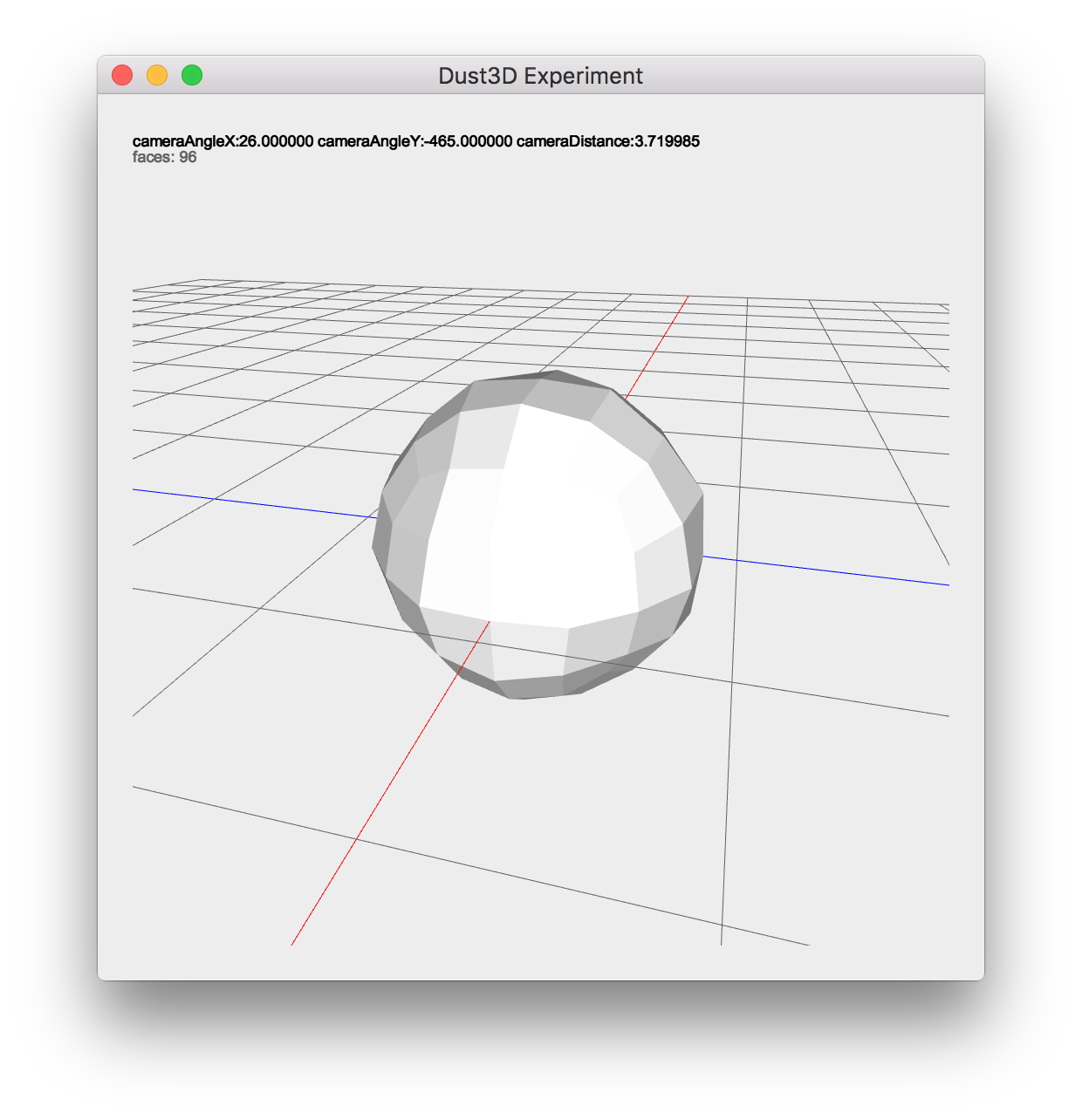

There is a implementation of Catmull-Clark Subdivision algorithm on rosettacode, the code is very simple and beautiful, just lack of some memory alloc fail check. I translated the algorithm to use my own array implementation.
Now, the render result looks not bad after 2 times of subdivisions. I would like to mark this todo as done, though there are more polish steps on the original paper, I just leave it as to be done in the future. - Export Wavefront .obj
- Render B-Mesh result
This todo already done in the B-Mesh algorithm implementation. - Design UI for monster parts configuration
- Test B-Mesh realtime generation with UI
- Render rigid animation
- png exporter for isometric 2.5D game
- Version 0.01 release
- Materials merge of different parts
- Implement the Skeleton of a Closed 3D Shape